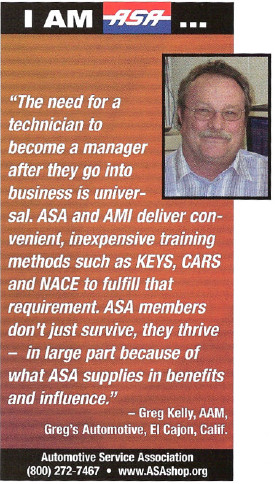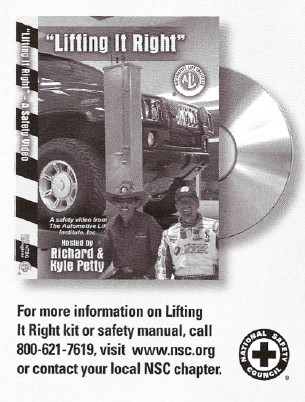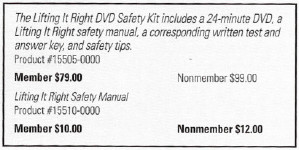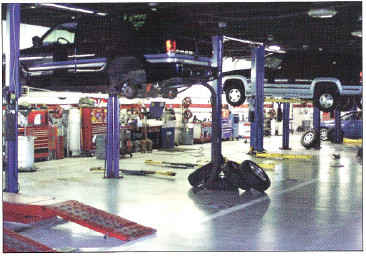Why Listening Customers pays off
 Imprtants of lift safety demonstrated by several factors including but not limited to – the
Imprtants of lift safety demonstrated by several factors including but not limited to – the
quality, price and manner of distribution of the products,
” Lupo said. Lupo added that “knowledge” may be established through “willful blindness” where the service facility fails to inquire about the authenticity of the products for fear of what such inquiry may yield. This occurred in Louis Vuitton S.A. vs. Lee, where the resellers of counterfeit Louis Vuitton and Gucci leather goods clearly knew or should have known that the goods were counterfeit. The goods at issue were purchased by the resellers from “itinerant peddlers at bargainbasement prices.” Furthermore, the goods demonstrated poor quality workmanship unlikely to be associated with high-end Louis Vuitton and Gucci goods. The resellers’ experience in the retail handbag and luggage business and the well-known association of the Louis Vuitton and Gucci brands with high-end goods should have alerted the resellers to question the legitimacy of these goods. The court said that such willful blindness was sufficient to establish knowledge and liability.
Once knowledge has been established, a service facility may be held civilly and criminally liable for installing or selling counterfeit products. Lupo noted that a plaintiff may seek statutory damages where there is insufficient information or evidence to establish
actual damages. A plaintiff may be awarded damages in the range of $750 to $150,000, and up to $1 million if the violation is willful.
Neal Zipser is vice president oj Catevo Aftermarket (www.catevo.com). a global integrated communications, marketing, technology and management consultancy Based in Raleigh, N.C
The National Safety Council with All (Automotive Lift Institute) presents: Lifting It Right, a new auto lift safety kit
 NASCAR drivers Richard and Kyle Petty show you the most common in-ground and surface mount lifts and tell you how to operate them safely and effectively.
NASCAR drivers Richard and Kyle Petty show you the most common in-ground and surface mount lifts and tell you how to operate them safely and effectively.
What the kit covers:
• The proper way to operate surface lifts and in-ground lifts
• A description of the All Uniform Warning Labels for Warnings, Cautions and Safety Instructions
• Proper ways to lift vehicles and how to maintain load stability on different types of lifts
• Safety tips and maintenance suggestions

Safety starts With you!
Lift safety can help save lives
Perhaps the most profound safety statement pregrading todays automotive service indrusty can be attributed to NASCAR’sKyle Petty. In the lift safety training video titled “Lifting It Right,” he passionately says, “Although it may not seem as exciting as NASCARracing, or perhaps fire fighting, or law enforcement, your chosen career does have two important elements associated with the three just mentioned. First, to ensure your safety and the safety of others, you must be aware of your surroundings and stay alert. Second – and most important of all – at the end of your work day, someone wants you to come home safely
” In today’s global economy, it’s fair to coin the phrase from that memorable Chevcommercial, “This ain’t your Grandpa’s Chevrolet.” Actually, when considering the vast majority of service centers across North America, the statement could be modified to reflect the fact that “This ain’t your Grandpa’s shop, either.” Not only have automobiles gone high tech, but for the most part, gone is the day when wrenching was simply that! Today’s technicians, shop owners, and vocational technology instructors must not only keep up with automobile technology, they must also tune into customer value-added services, environmental issues, purchasing considerations and risk management.
Not many will disagree that “safety is everyone’s responsibility” Looking deeper into this, however, let me challenge you. When was the last time that you took the proactive step of influencing those you work with each day in the area of workplace safety? It’s amazing when you consider that auto technicians take such a tremendous amount of pride and care when it comes to their tools and those massive storage chests used to house and protect them. Is it
fair to say that those who are serious about their chosen profession often forego other desires to acquire simply the best brand-named tools available?
Yet, often those same technicians are willing to work each day under an automotive service lift that has not been maintained in a manner that demonstrates a responsible level of planned maintenance. Sadly, often the necessary training received in operating a lift is overlooked, as are basic automotive lift risk management practices such as the use of appropriate personal protective equipment, jack stands, vehicle-lifting points and even safety locks.

In an instant, the omission of these practices can have a horrific effect on an individual’s business and the lives of those working in and around such an environment.
Your shop’s service lift is a great place to begin to tackle workplace safety. Remember: A good man once said, “Most important of all … at the end of your work day, someone wants you to come home safely
” Editor’s Note: For more information on lift safety, visit www.autolift.org.
R.W “Bob” O’Gorman is the president/CEO of the Automotive Lift Institute (ALl). With more than 20 years of product testing and certification experience, he is a contributing member of the Standards Engineering Society, and documents promulgated by the Society of Automotive Engineers and the American National Standards Institute. ALl is proud to partner with the National Safety Council (www.nsc.org) to promote safe practices in the automotive service industry. Gorman can be reached bye-mail at [email protected].
Quick Links
Contact Us